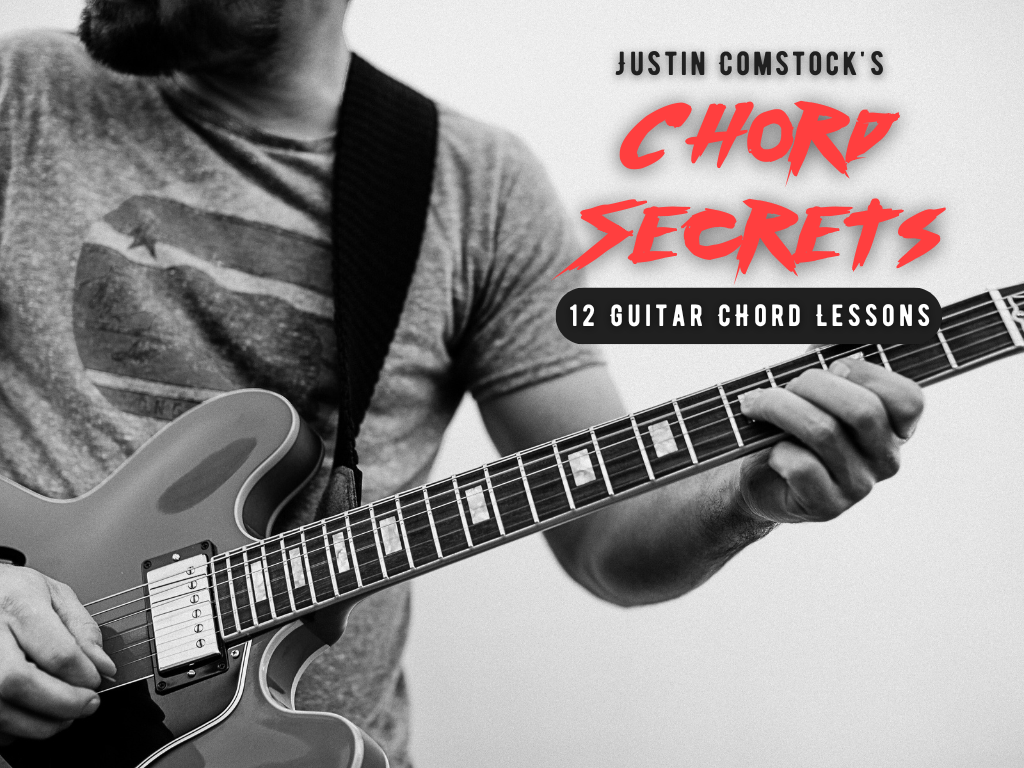As any guitarist knows, mastering a barre chord for guitar is a significant milestone in the journey towards proficiency on the instrument. These difficult chords open up a world of possibilities, allowing players to navigate through complex progressions and unlock new chord types across the guitar. We have a guitar course on chords that will cover a handful of Barre chords and power chords.
Understanding Barre Chords:
Barre chord for guitar, also known as “bar chords,” involve using one finger to press down multiple strings across the fretboard. This finger acts as a movable nut, allowing you to play chords in different positions on the neck. While mastering barre chords requires strength and dexterity, they offer tremendous flexibility and are essential for playing a wide range of musical styles, from rock and blues to jazz and beyond.
To play a basic barre chord for guitar, start by placing your index finger flat across all the strings at a particular fret. Then, use your remaining fingers to form the desired chord shape behind the barre. The key to success lies in applying even pressure with your index finger to ensure that all the strings ring out clearly.
Common Barre Chord for Guitar Progressions:
- The I-IV-V Progression: This classic progression forms the backbone of countless songs across various genres. In the key of G major, for example, the I-IV-V progression would involve playing G major, C major, and D major barre chords. Experiment with different rhythmic patterns and embellishments to add depth to this timeless sequence.
- The Minor Progression: Minor barre chords are equally important and are frequently used to evoke melancholy or introspective moods. A common minor progression might involve chords like Am, Dm, and Em in the key of A minor. Pay attention to the emotional resonance of each chord and explore how subtle variations in voicing can alter the mood of the progression.
- The Blues Shuffle: Barre chords are integral to the blues genre, where they’re often used to create driving rhythms and expressive chordal movements. A typical blues shuffle might feature dominant seventh barre chords such as A7, D7, and E7, punctuated by embellishments and improvised fills. Experiment with bending and sliding techniques to infuse your playing with authentic blues flavor.
- The Jazz Standards: Jazz guitarists rely heavily on barre chords to navigate through complex harmonic progressions and intricate voicings. Standards like “Autumn Leaves” or “All of Me” feature extended chords and chromatic movement that require precision and control. Practice arpeggiating chords and exploring substitutions to develop a deeper understanding of jazz harmony.
Practical Tips for Mastering Barre Chords:
- Build Finger Strength: Strengthening your fretting hand is essential for tackling barre chords. Incorporate exercises like finger presses and finger rolls into your practice routine to develop the necessary muscular endurance.
- Focus on Technique: Pay close attention to your fretting hand position and wrist angle when playing barre chords. Aim for a straight wrist and ensure that your index finger is pressing down firmly behind the fret, rather than on top of it.
- Start Slow and Gradually Increase Speed: Don’t rush the process of learning barre chords. Begin by practicing slowly and methodically, focusing on producing clean, ringing notes. As your proficiency improves, gradually increase the tempo and challenge yourself with more complex chord progressions.
- Experiment with Different Guitar Setups: The action and string gauge of your guitar can significantly impact your ability to play barre chords comfortably. Experiment with different setups to find the combination that works best for your playing style and hand anatomy.
- Be Patient and Persistent: Like any aspect of guitar playing, mastering barre chords takes time and dedication. Be patient with yourself and celebrate small victories along the way. With consistent practice and a positive mindset, you’ll gradually develop the skill and confidence to tackle even the most challenging chord progressions.
In conclusion, barre chords are a fundamental aspect of guitar playing that opens up a world of creative possibilities. By understanding their mechanics, exploring common progressions, and implementing practical tips, you can master barre chords and take your playing to new heights. So grab your guitar, roll up your sleeves, and embark on the rewarding journey of mastering barre chords. Happy playing!

Download The FretDeck & Chord Secrets Course!
Download Course






